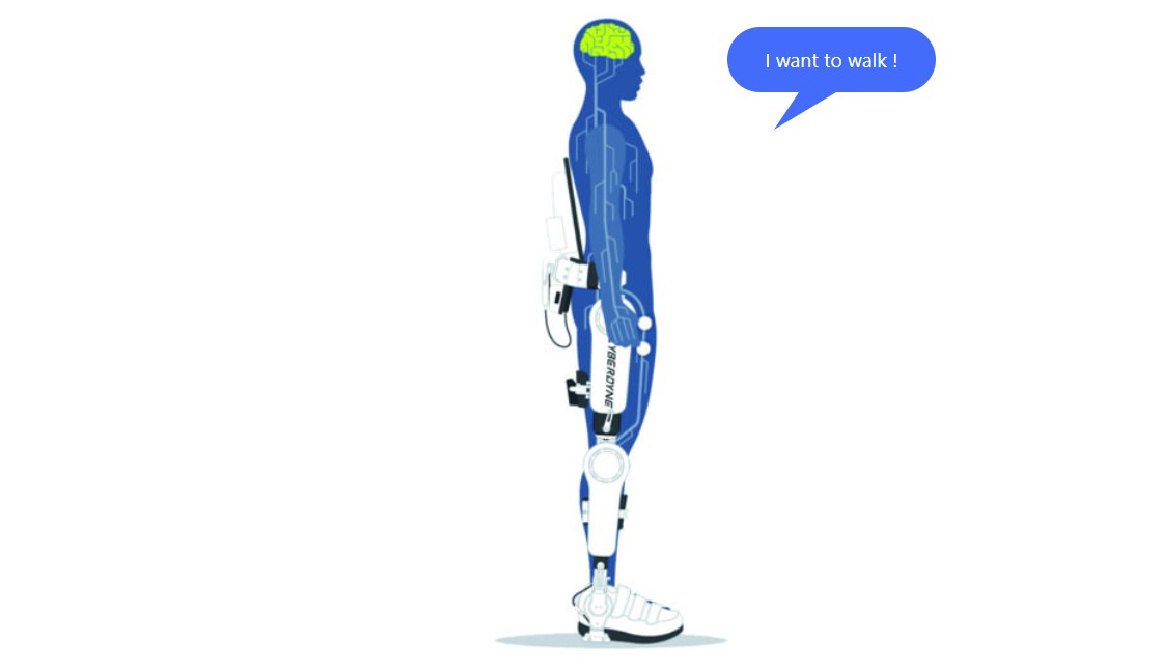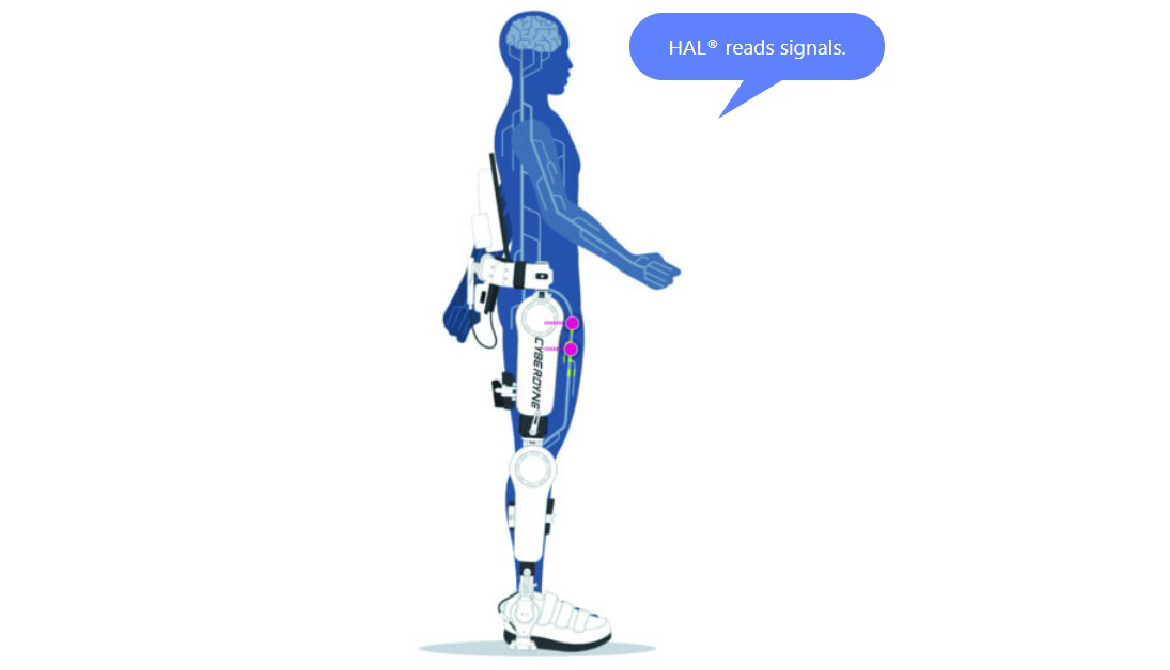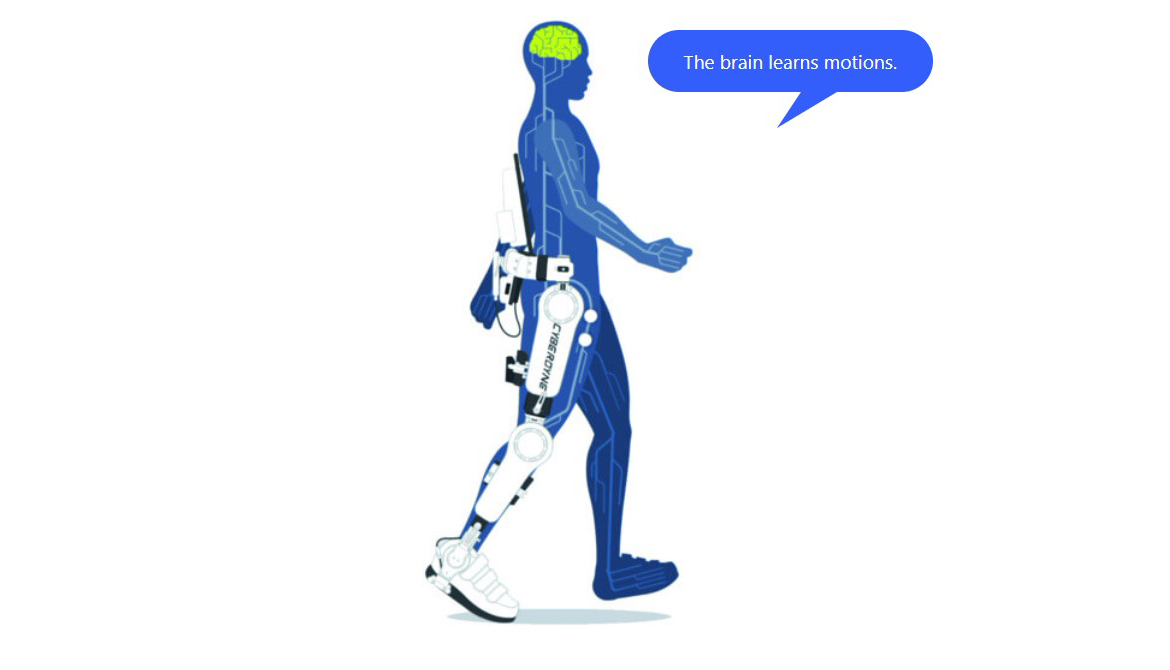WHAT IS HAL?
HAL® [Hybrid Assistive Limb®] is the world‘s first cyborg-type robot that can improve, enhance and support the wearer’s bodily functions and physical capability.
Wearing HAL® [Hybrid Assistive Limb®] leads to a fusion of “man”, “machine” and “information”. HAL® [Hybrid Assistive Limb®] assists a person with paralysis or weakness of the limbs as a result of the spinal cord or brain injuries such as stroke, traumatic brain injury, multiple sclerosis, or neurodegenerative diseases to move and enables him or her to exert bigger motor energy than usual. HAL® is also considered the system that accelerates motor learning of the brain which eventually leads to the neuroplasticity of the brain functions.
HAL®‘S Motion Principle

We are your trusted partner for Cyberdyne Products in the MESASEA region. We are providing advanced neuro-robotic rehabilitation technologies for the well-being of patients around the world.
ROBERT®
VIBRAMOOV®
Brain Computer Interface




